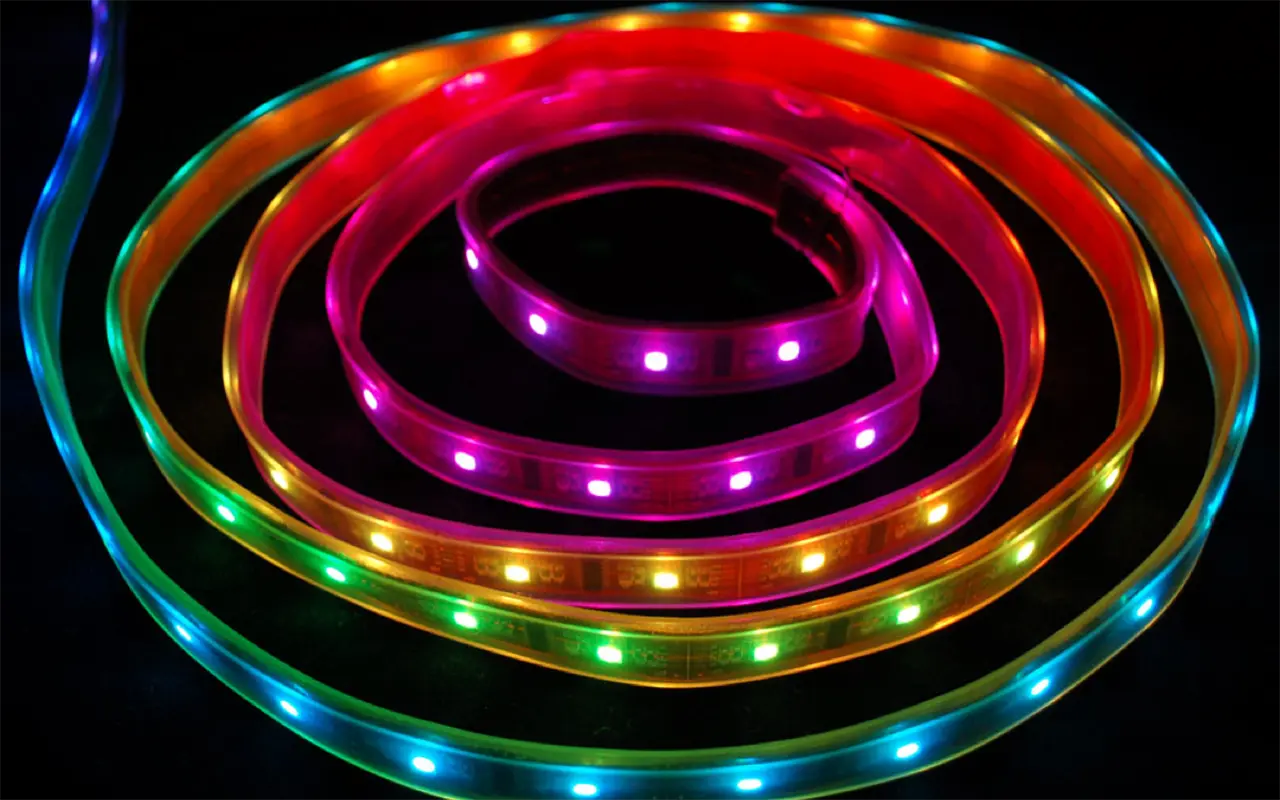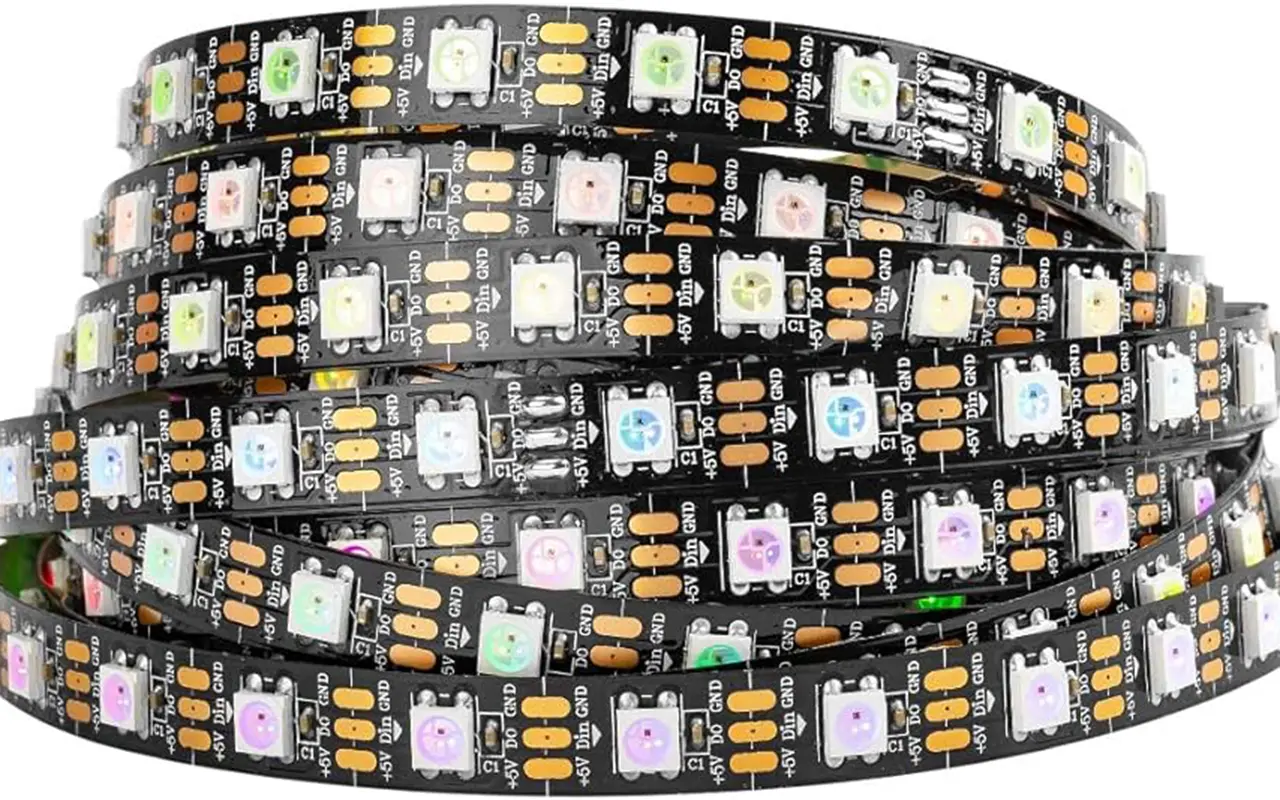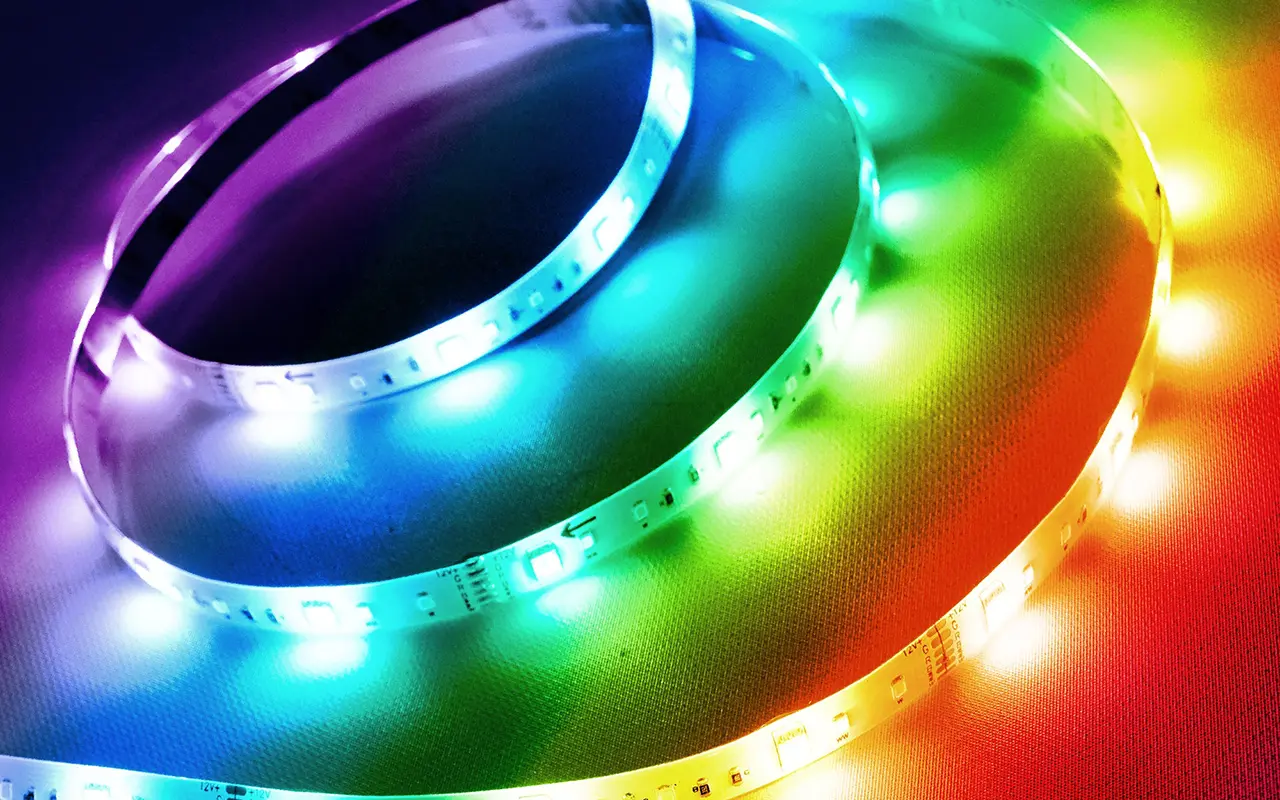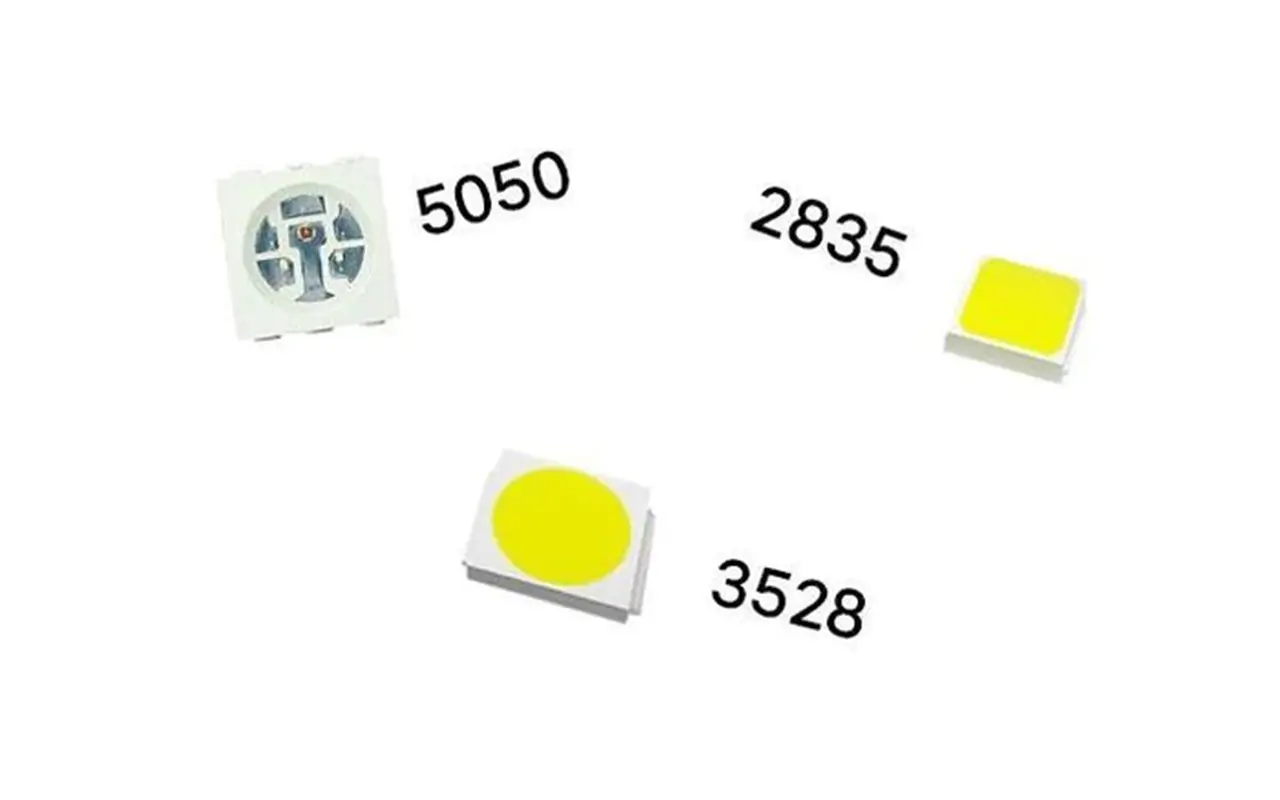If you have ever used addressable LEDs, you have probably heard of WS2811 and WS2812B. But what separates these two LED technologies? Why does understanding their differences matter? This guide explains WS2811 and WS2812B in detail, so you can choose the right LEDs for your project.
To pick the correct LED, it’s crucial to know the disparities among these kinds. This can be for creating a beautiful display or saving energy.
This post explores WS2811 and WS2812B, exploring their histories, applications, and critical differences. Read on to learn which LED type is best suited for your project.
What is WS2811?
Brief History of WS2811
The WS2811, made by Worldsemi, was a big hit in the RGB LED industry. It became popular because it allowed easy control of many LEDs. They made the chip to address the need for simpler LED management in businesses. Its introduction revolutionized how designers approached lighting scenarios, adding both vibrance and efficiency.
Common Applications
You can often see WS2811 LEDs on buildings or in gardens, adding light and decoration. They’re a staple in theatrical stage designs and are widely used in festive lighting. You can use WS2811 in car lights to make them glow with different colors and brightness. It’s fascinating! These LEDs can be used in many different ways. They can light up walkways or be a part of art.
Key Features of WS2811
The WS2811 is great because it works at 12V, so you can connect more LEDs without voltage issues. The chip’s outer IC helps efficiently control the LED clusters, usually in groups of three. This makes it a strong contender for projects requiring macro-level control. In addition to RGB, designers have options like RGBW and RGBA for different colors. This lets them experiment with various hues and saturation. The chip is reliable for outdoor setups because it can handle different voltages.
What is WS2812B?
Brief History of WS2812B
Riding on the coattails of WS2811’s success, Worldsemi introduced the WS2812B. The chip was a big improvement, not just a small update. It was made to fix the problems people had with WS2811. A big improvement was combining the control circuit and RGB chip into one 5050 component. By using this all-in-one approach, we can reduce the need for extra parts and circuit space. text
How it Improves upon WS2811?
WS2812B’s integrated circuitry paved the way for more straightforward implementations. Assembling an LED strip with WS2812B is easier because you don’t need external ICs. This results in a more streamlined and aesthetically pleasing design. Moreover, the WS2812B chip provides far superior single-LED control granularity. Picture setting up each LED on a long strip to show various colors and patterns. WS2812B is highly valued in applications that need accurate visual outputs because it can do this.
Key Features of WS2812B
Operating at 5V, the WS2812B has an advantage in energy efficiency. It’s a favorite among DIY hobbyists and those looking to add smart lighting to their homes. The built-in IC makes it easier to control and create fancy lighting effects for each LED. But, using 5 volts can cause voltage drops in long LED runs, so extra power points are needed. This chip also exclusively operates in the RGB color space. WS2812 has fewer colors than WS2811, but it transitions and animates colors more smoothly due to a faster PWM rate.
Core Differences between WS2811 and WS2812B
WS2811 and WS2812B are popular addressable LEDs, but they can’t be swapped with each other. They boast unique features that can make or break your project. Here, we delve into the core architectural differences that set them apart.
Architecture Comparison
IC Placement
In WS2811, the integrated circuit (IC) is separate from the LED, usually attached to the LED strip. When you use an outside placement, you have more design choices. However, it can make the setup more complicated. On the flip side, WS2812B simplifies the hardware by embedding the IC directly into the LED. This innovation is a game-changer for those seeking a sleeker, more integrated system.
Voltage Requirements
Voltage compatibility can significantly impact your project’s success. The WS2811 operates at 12V, which is good for long LED strips with voltage drop concerns. The WS2812B uses 5V power and saves energy. It requires power injections in long runs to fix voltage drop.
Feature Showdown
Color Rendering
The WS2812 B’s range is confined to the RGB spectrum. The colors are bright, but there are no options for white or other colors. WS2811 offers more than just RGB. It also has RGBW and even RGBA options for richer lighting possibilities.
Speed and Data Transmission
Both LED types operate on a single-signal transmission line. However, WS2812 B’s integrated IC enhances data transmission speed and stability. This factor makes animations smoother and response times quicker. This is the best choice for applications that need fast color changes and detailed lighting patterns.
LED Control Differences
The WS2811 usually controls LED clusters, usually three at a time, to adjust the level of control. This approach is beneficial for projects where uniform lighting is desired. WS2812B makes things even better by allowing you to control each LED separately. This opens up endless possibilities for creating intricate and complex lighting patterns. This feature is great for DIYers and professionals who want precise control.
Stromverbrauch
Power efficiency is often a key consideration, especially for large installations. WS2811 needs extra voltage, which can cause more power usage and higher costs in the long run. The WS2812B operates on 5V and is more energy efficient. This is great for smaller projects or when conserving energy is important.
Pros and Cons: WS2811 vs WS2812B
To choose between WS2811 and WS2812B, consider the advantages and disadvantages of each. To help you choose the best LED for your project, we will discuss the pros and cons of both types.
WS2811: Advantages and Disadvantages
Profis
Extended Strip Lengths: One advantage of WS2811 is that it can operate at a higher voltage of 12V. You can use longer LED strips without voltage drop, perfect for outdoor installations.
Mass LED Control: The WS2811 architecture is great for projects that need uniform lighting effects in large areas. It controls LEDs in three clusters. Consider applications such as façade lighting, where complex color changes are not as important.
Nachteile
Limited Granularity: The three LED clusters controlled by a single WS2811 chip limit your granular control over your lighting setup. This can be a drawback for projects requiring individual LED customization, such as complex animation or signage.
Higher Power Consumption: Running at 12V, WS2811 setups can be energy-intensive, particularly in larger installations. This could increase operational costs over time, a crucial factor for long-term projects.
WS2812B: Advantages and Disadvantages
Profis
Precision Control: WS2812B is built for granularity. Each LED comes with an integrated IC, allowing for individual control. Its detailed lighting designs make it popular for art installations and interactive displays.
Energie-Effizienz: Operating at a lower voltage of 5V, WS2812B is generally more energy-efficient. This feature can be particularly beneficial for smaller setups or IoT devices where energy usage needs to be minimized.
Nachteile
Voltage Drop in Long Runs: WS2812 B’s lower operating voltage is a double-edged sword. Although it’s good for saving energy, longer strips need more power injection points to prevent voltage drop, making the setup more complex.
Praktische Anwendungen
Um herauszufinden, ob WS2811 und WS2812B für verschiedene Projekte geeignet sind, müssen wir testen, wie gut sie in realen Situationen funktionieren. Im Folgenden werden einige Fallstudien vorgestellt, die zeigen, wo jeder LED-Typ seine Stärken hat.
WS2811 in der realen Welt - Szenarien
Gebäude-Außenbeleuchtung: Die WS2811 ist häufig die erste Wahl für großflächige Außeninstallationen, z. B. an Fassaden von Geschäftsgebäuden. Sie können problemlos große Flächen abdecken, da sie mit 12 V betrieben wird und über lange Streifen verfügt. Sie müssen sich keine Sorgen über Spannungsabfälle machen. Außerdem ist die geringere Granularität kein Problem, wenn eine gleichmäßige Beleuchtung gewünscht ist.
Feiertagsdekorationen: In der Weihnachtszeit ist der WS2811 aufgrund seiner Fähigkeit, LEDs in Clustern zu steuern, eine beliebte Wahl für Festtagsbeleuchtungs-Setups. Sie können zum Beispiel eine Reihe von WS2811-Lampen gleichzeitig blinken lassen und so eine koordinierte Anzeige erzeugen. Dies erfordert keine komplizierte Programmierung für jede einzelne LED.
WS2812B in realen Szenarien
Smart Home-Integration: Der WS2812B bietet eine unvergleichliche Granularität für Smart-Home-Enthusiasten. Sie können jede LED separat steuern. So können Sie komplexe Lichtsequenzen und Auslöser erstellen. Die LEDs funktionieren auch mit anderen Smart-Home-Geräten wie Alexa oder Google Assistant.
Kleinformatige Kunstinstallationen: Im Hinblick auf künstlerische Anwendungen zeichnet sich der WS2812B durch seine Einzel-LED-Steuerungsmöglichkeiten aus. Künstler können die Farbe und Helligkeit jeder einzelnen LED steuern. Dies ermöglicht detaillierte Designs und interaktive Kunstinstallationen.
Wie wählt man zwischen WS2811 und WS2812B?
Die Wahl der richtigen LED ist wichtig. Sie hängt von den Kosten, der Benutzerfreundlichkeit und den Projektanforderungen ab. Hier ist, was zu beachten ist:
Budget und Kosten
Der WS2812B ist teurer, obwohl er über erweiterte Funktionen verfügt. Wenn Sie ein kleineres Budget haben, aber dennoch eine große Anzahl von Leuchten steuern müssen, ist der WS2811 eine günstigere Option.
Benutzerfreundlichkeit
Der WS2812B führt in der Kategorie Benutzerfreundlichkeit. Die Einrichtung einer WS2812B-Leiste ist in der Regel einfacher, da sie über einen eingebauten IC verfügt. Für den WS2811 ist unter Umständen ein komplexes Steuerungssystem erforderlich, das mehr Zeit und technisches Know-how erfordern kann.
Vielseitigkeit und Projektbedürfnisse
Letztendlich entscheiden die spezifischen Anforderungen Ihres Projekts über Ihre Wahl. Wenn Sie eine präzise Steuerung der LEDs benötigen und Energie sparen wollen, wählen Sie WS2812B. Wenn Sie jedoch nicht jede Leuchte einzeln ansteuern müssen, ist WS2811 vielleicht besser geeignet.
FAQs
Kann ich WS2811- und WS2812B-LEDs zusammen in einem Aufbau verwenden?
Ja, das ist möglich, aber kompliziert. Sie benötigen ein Steuergerät, das beide Typen unterstützt und mit Spannungsunterschieden umgehen kann. Das Mischen der beiden Typen könnte die Farbkonsistenz und die Granularität der Steuerung beeinträchtigen.
Wie kann ich Spannungsabfallproblemen bei WS2812B-Streifen entgegenwirken?
Spannungsabfälle sind bei längeren WS2812B-Streifen wahrscheinlicher, da sie mit 5 V betrieben werden. Eine Lösung ist die Einspeisung von Strom an mehreren Punkten entlang des Streifens oder die Verwendung eines Kabels mit höherem Querschnitt.
Ist WS2811 das Gleiche wie WS2812?
Nein, WS2811 und WS2812 sind unterschiedlich. Während der WS2811 ein externes IC verwendet und mit 12 V arbeitet, integriert der WS2812 das IC und arbeitet mit 5 V. Außerdem ist der WS2811 im Vergleich zum WS2812 weniger granular in der Steuerung.
Ist jede LED im WS2811 einzeln adressierbar?
Nein, der WS2811 steuert in der Regel LEDs in Clustern, üblicherweise in Dreiergruppen. Daher ist er für Anwendungen, die eine individuelle LED-Steuerung erfordern, weniger geeignet.
Wie unterscheiden sich die RGB-Streifen voneinander?
Nicht alle RGB-Streifen sind gleich. Faktoren wie der LED-Typ (WS2811, WS2812B usw.), die Spannung und der Steuermechanismus unterscheiden sie voneinander. Lesen Sie vor dem Kauf immer die technischen Daten.
Benötige ich zusätzliche Komponenten wie einen Kondensator für WS2812B?
Die Verwendung von Kondensatoren wird empfohlen, um Spannungsschwankungen auszugleichen, ist aber nicht zwingend erforderlich. Häufig wird ein 1000uF-Kondensator über dem Netzeingang verwendet.
Welches Netzteil ist ideal für den WS2812B?
Ein 5-V-Netzteil ist ideal für WS2812B. Um die richtige Wattzahl auszuwählen, ermitteln Sie die Gesamtleistung, die für Ihren LED-Streifen benötigt wird.
Wie hoch ist der Stromverbrauch einer WS2811-LED?
Eine einzelne WS2811-LED verbraucht normalerweise etwa 0,3 W. Der Stromverbrauch kann jedoch je nach Helligkeit und Farbeinstellungen variieren.
Ist RGBW besser als RGB?
Die RGBW hat eine weitere weiße LED für mehr Farben und natürliche Weißtöne. Wenn Farbgenauigkeit für Ihr Projekt wichtig ist, kann RGBW von Vorteil sein.
Wie kann man einen WS2812B LED-Streifen sicher mit Strom versorgen?
Verwenden Sie für einen sicheren Betrieb ein separates 5-V-Netzteil. Möglicherweise möchten Sie auch einen Kondensator zur Spannungsglättung hinzufügen. Befolgen Sie stets die Leistungsanforderungen und elektrischen Richtlinien des Bandes.
Zusammenfassung und Empfehlungen
Sowohl WS2811 als auch WS2812B bieten einzigartige Vor- und Nachteile. Ihre spezifischen Bedürfnisse und Projektanforderungen werden die beste Wahl für Sie bestimmen. WS2811 ist am besten für große, einfache Projekte geeignet. Der WS2812B eignet sich hervorragend für eine detaillierte Steuerung und weniger Stromverbrauch. Wählen Sie mit Bedacht!
In der Welt der LED-Technologie ist es für den Erfolg entscheidend, den Unterschied zwischen WS2811 und WS2812B zu kennen. Wenn Sie hochwertige LED-Produkte benötigen, wählen Sie Unitop. Sie sind ein Top LED-Leuchtbänder und LED-Neon-Flex Hersteller in China. Zögern Sie nicht zu Kontaktieren Sie uns für alle noch offenen Fragen oder speziellen Anforderungen. Lassen Sie sich von der Expertise von Unitop den Weg zum Glanz Ihres Projekts weisen.

Tom ist jetzt der Verkaufsleiter von Unitop (China) Co., Limited. Er war in der LED-Beleuchtung Industrie seit 2005. Er ist Experte für Vertrieb und Marketing sowie für Fabrikmanagement. Er mag Bodybuilding und ist außerdem ein verrückter Apple-Fan! Er ist ein fleißiger Kerl und liebt es, neue Dinge zu lernen und auszuprobieren.
E-Mail: tom@unitopledstrip.com WhatsApp: +86-18680307140









Hinterlasse einen Kommentar
An der Diskussion beteiligen?Hinterlasse uns deinen Kommentar!